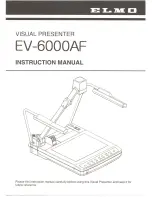
Cyclapse Classic
Troubleshooting Guide
15-16.1 volts: The battery pack is charged.
16.2-16.8 volts: The battery appears to be freshly charged using an external
battery charger. If this isn’t the case, the internal charger circuit may be out of
tolerance.
Charge Power
You can test the charging power (i.e. solar panel) by touching the probe to the white test
point on the Cyclapse Power Module.
Charge Voltage Range:
0 volts: There is no charge power. (Solar panel is receiving no light, or failed.)
16-30 volts: Charge power source seems to be OK. The battery appears to be fully
charged, and is not presently drawing current from the charge source.
About the same as the Battery Pack voltage: The charger source is working fine,
and is presently charging the battery pack.
Less than the Battery Pack voltage: There isn’t enough charge power to charge the
battery pack. (Insufficient light on the solar panel?)
Camera Power
A switching power supply inside the Cyclapse Power Module converts the battery power
to 8 volts, to power a camera. As long as the battery pack has 10 volts or more, the supply
should be able to power a camera.
The yellow test point on the Cyclapse Power Module will indicate the output voltage of
the camera power supply.
Camera Power Supply Voltage Range:
0 volts: There is no output from the camera power supply. The DigiSnap 2700 has
the ability to control this power supply output. Try disconnecting the square 4 pin
cable at the DigiSnap, and see if the camera power supply voltage 'turns on'.
0-7.5V: The power supply voltage is out of tolerance, and may not be sufficient to
power a camera.
7.5-8.5V: The camera power supply is working fine.
>8.5V: The power supply voltage is out of tolerance, and may possibly damage a
camera.
Power is applied to a camera via a cable from the Cyclapse Power Module. In most cases
this cable is connected to a dummy battery pack also called a DC Coupler, which then
plugs into the battery compartment of the camera. The contacts on the dummy battery are
very hard to probe, as they are recessed. If you need to verify power on these contacts,
you may have to find some fine wire to stick into the slots, or sand the tips of the probes
to a sharp point.
http://www.harbortronics.com/
6 Of 12
2/11/2016






























